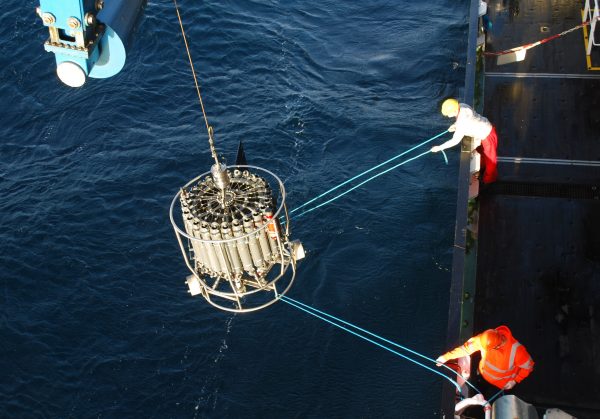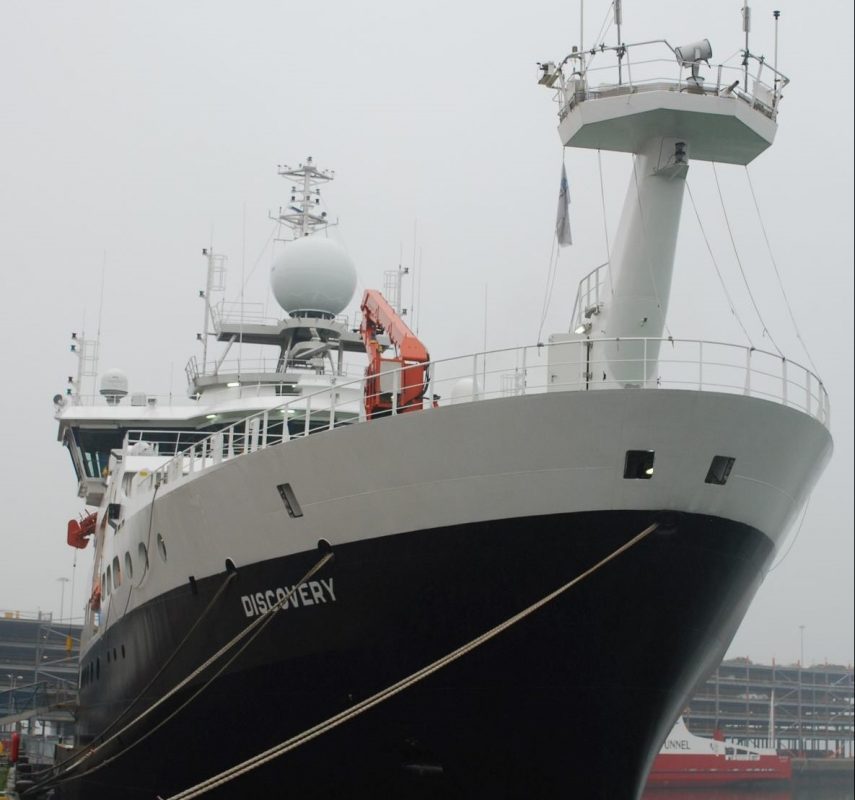This week the RRS Discovery sailed from the National Oceanography Centre in Southampton, UK, to work at the Porcupine Abyssal Plain Sustained Observatory (PAP-SO), one of the eleven EMSO Regional Facilities. The cruise was delayed from earlier in the year because of the coronavirus pandemic.
The team aboard RRS Discovery arrived at the PAP-SO on Wednesday night. During the time at PAP-SO there are moorings and instruments to recover that monitor the upper ocean, mid-water and seabed processes. If weather conditions at this time of year allow, replacement moorings will be deployed including a new surface ocean buoy provided by as part of a long-running collaboration with the UK Met Office. This will improve the measurement of atmospheric and surface ocean parameters at PAP and improve reliability of the observatory in the most challenging northeast Atlantic conditions.
PAP-SO is a long-term time-series study site that measures Essential Ocean Variables from the surface ocean to abyssal depths. Over thirty years it has made many important contributions to helping scientists understand the functioning of the largest ecosystem on our planet with infrastructure at the surface, in the water column and at the seabed. This is highlighted by nearly 300 scientific publications written about data collected at PAP. As part of EMSO and the Integrated Carbon Observing System (ICOS), PAP-SO scientists can enhance ocean observation by working with other ocean observatories and observing systems to share expertise.
Working together, these different observatories are measuring extensive parameters throughout the water column to the seabed, from a broad range of scientific disciplines including meteorology, physical oceanography, biogeochemistry, ecology and geo-hazards. This enables us to learn quickly from each other’s experience in the engineering needed to manage, maintain and develop the future of these important observatory infrastructures so that we can produce science of global importance. This in an important step toward increasing the global ocean observations required to meet some of our biggest challenges.



